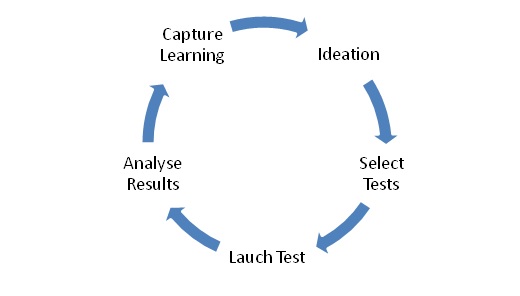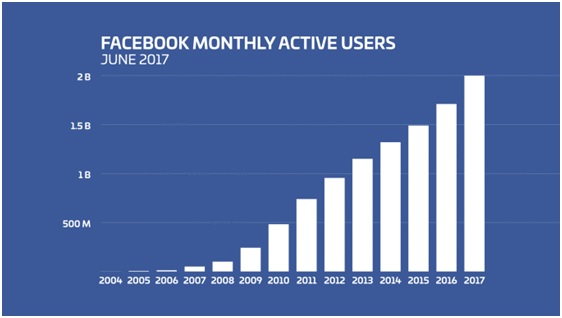Welcome to WordPress. This is your first post. Edit or delete it, then start writing!
Category: Uncategorized
How Animated Videos Can Help To Promote Your Business

Why Animation Videos Are So Popular?
Animation is not all about just children’s pictures and something that you fool around with at some point in your lifetime. It has been found that animation, if used properly, can bring about great success for a business. The use of animation in digital marketing sphere has shown promising results in recent years.
Another reason why the current popular trend of animated videos is set to grow is only due to high-speed Internet and its market penetration.
An animated video presents information on the screen using colourful graphics and engaging motion. Industry gurus opine that with animated videos the marketing possibilities are endless.
Many companies of different sizes and types are all getting on the bandwagon of using animated videos as part of their online marketing strategies.
Animated videos are used extensively by the more established companies to explain how their products or services work. So much so, even start-ups with limited budgets are foraying into the world of animated graphics to promote their business and are viewing it as an integral part of their business strategy. Read on to find out why you can use animated videos to promote your business.
1. People are visual learners
It is a known fact that of 65% of people can learn more by viewing pictures, that is, they are visual learners. Over 90% of information that reaches the brain is visual in nature. Visual information that reaches the brain is processed faster than any other type and can understand easily.
For all of these reasons, there has come about a noticeable increase in the video content that is streamed through social media and the Internet.
The fact that Facebook streams an average of over 4 billion videos in a day bears evidence to this fact. In short, pictures and videos are more remembered in people’s minds than just text.
2. Animated videos can be produced quickly
Many companies, even today, think that only large corporations with big budgets sell their products through the online video channel. It is true that live action video, in addition to a substantial budget, has all the ingredients depending on outside influences: shooting the video, actors, wardrobes of the actors, and location to shoot the scene.
It needs more equipment to create. The end video can, therefore, make or break the message that you intend to spread to your prospective clients.
However, it should be understood that live action video is not the only way in which you can make your customers understand about your product or service. Animated videos can be created quickly in a definite and controlled environment.
The tools are available within your organization and there is a total control of the final product. It works out cheaper and it is possible to deliver the message that you want your audience to see and understand in a powerful manner using an animated video.
3. Animated videos can help to improve your Google ranking
One of the metrics that Google uses to rank websites is the amount of time that a user spends on the site. The average website user is known to spend only 10 or a maximum of 20 seconds if no other reason compels him/her to stay further. If the visitor leaves the website within a few seconds, your Google ranking can be affected.
An animated video can do help to improve the rankings. Animated videos are entertaining, educative and fun to watch. The chances are very high that a visitor to the website will watch an animated video that is playing on the landing page of your website before leaving the site.
It is estimated that for a site having animated videos, the website average time for a visitor is found to increase from 8 seconds to about 2 minutes.
4. Animated Videos can help to increase conversion rates
According to surveys that have been conducted, over 85% of respondents admitted that they have ended up buying a product after seeing an animated video that explained the use of the product.
More than keeping the visitors at the website for longer periods, they help to convert prospective clients into customers. In this light, it is important to note that the videos should be created in the most exciting and innovative manner for conversions to increase.
5. Animated videos can go viral
Most animated videos are made with characters that represent prospective clients. They are made in such a way that they are informative as well as entertaining.
If the video is something that they can relate to, the level of engagement is high. It is possible that they will share it with like-minded friends.
The video can then go viral and this directly translates to a huge exposure and an increase in the number of new prospective clients. The increase in the amount of interest brings along more business growth and sales.
The best stories are when the customers-to-be form the stars. Always project the company as a supporting character in the video.
6. Animated videos serve to draw the viewer’s attention
Animations with the right mix of movements and colours can draw the viewer’s attention and keep them hooked on to the movie. The story-telling techniques that are employed also play an important part.
Visual aids are proven to be more persuasive (43% more) than verbal attempts to persuade. Animated videos have both the audio and visual communication that significantly enhances perception.
7. Animated videos are easy to understand
The characters and elements in an animated video are combined in such a way that the most complex data and concepts in a simple and easy-to-understand manner. The best part is that the simple format is easy for the viewer to remember.
The characters in an animated movie can be made to act in any manner for you. They can fly, speak, sing or dance to convey your message to the audience.
Animated Videos can be used to highlight the key points of your product or service in an effective manner. They put across important matter across to the audience in a matter of few minutes which otherwise would have taken hours to read and understand. The recommended length for an animated movie to advertise your product is 90 to 120 seconds.
8. Animated videos are economical
Animated video is one of the cheapest ways that you can use to promote a product or a service that your business offers. All it needs is the creativeness of a team that will put together an idea using animation skills.
Animated videos are not very expensive to create and are seen to provide optimal ROI and lead conversion rates for just about any business (an increase of about 80%).
Animated videos need not be updated as frequently as live-action videos as they remain fresh for longer periods unlike the latter.
9. Animated videos help you to stay ahead of the pack
A good-quality animated video is what can make you beat the competition. A high-quality video places you in the market as an innovative and futuristic company and sets you apart from the rest of the pack.
10. Animated videos are a great way of engaging with customers
People all over the world watch videos every day. It is estimated that over one-third of the time that an individual spends online is for watching videos. Therefore, making use of animated videos is seen as one of the best ways to catch the attention of a prospective customer.
It can be considered as the very first step in making a sale. Therefore, making use of content that engages the audience is crucial to make your product or service a success.
11. Animated videos help to improve SEO
Google loves animated videos as much as your prospective clients. As Google rankings improve when you place videos on your website, it is also a good way to improve your SEO and your website to rank higher in Google’s search listings. This is one major reason why animated videos are being used more.
If you host your animated video on YouTube and embed these on your website, you can do a smart job of including keywords in the video andaccording to statistics, the chances of your video making it to the first page of Google search listings increases by over 50 times.
#12: Animated videos appeal to everyone
Animated videos appeal to a much larger group than just children. Many animated videos boast of millions of subscribers (e.g., Kurzgesagt in YouTube). Animated videos do not promote any specific race, age, religion or nationality.
This is important for your business because the whole world is the market for your online business. Therefore it needs to appeal to everyone and reach different demographic groups, cultures and races.
13. Animated videos are helpful tools that aid in building your brand
Animated videos give your business fantastic opportunity to build a brand. The creative team that builds the video can incorporate brand images, logos and colours of your business into the video every time. They can even build a series of videos that will help to place the brand successfully in the market.
In the light of the above discussions, the reasons why an online business owner would want to make animated videos on board the marketing campaign are as follows:
- They pave way for increased sales
- They serve to increase conversions
- They improve search engine rankings
- They put forth easy-to-remember marketing messages
- They keep up the customer engagement
- They reduce the consultations because of a better understanding of how the product/service works
The Bottom Line
If you are a business owner and you have not added animated videos as part of your marketing strategy, it is time to get started now. There are cloud-based programs that help to create animated videos quickly and easily with simple tools that can be used to drag and drop figures.
More than 64% of prospective clients are likely to buy a product online after watching videos and that over 50% of viewers are looking for more information about a product or a service after watching a video should be reasons enough to get started.
A Guide to Successful Content Marketing Career

What is Content Marketing
The technique of creating or curating and distributing valuable content that is relevant to a specific type of customer audience so as to attract them is called content marketing. The basic premise of content marketing is to make some profit out of the prospective customer’s action.
The most important work of content marketing is to provide value to the target audience. It has been observed that content marketing costs almost 62 per cent less than traditional marketing but generates over three times the number of leads.
The act of content marketing is essentially the act of sharing information, entertainment, knowledge or advice in forms such as: emails, blogs, webinars, podcasts, infographics, videos, articles, quizzes, cartoons, social media content, etc.
Whereas inbound marketing focuses on specific buyers, content marketing is always directed towards a broad spectrum target audience.
Given below are a few details about the different types of content that are marketed with a view to turning the customer sentiment to a positive action. It is estimated that the worldwide content marketing revenue will be about $313.42 billion by the year 2019.
Content marketing is done for the reason that businesses hope to get the reader’s contact details whether they are reading your blog, filling out forms, or subscribing to your monthly newsletters.
They are awarding you the permission to contact them in the future if they provide you with their email address.
Different Types of Content
In today’s digital marketing world, there are many using content to promote the product/service of your company. In fact, content marketing is seen more as a necessity today.
To make customers discern your product/service as the better one among millions of others’, it is important to provide value-driven and engaging content to the target audience.
1. Blogs
The first type of content that was marketed was the blogs. Now they have become very common. Publishing blogs are the act of disseminating valuable information over the Internet to the discerning audience for free.
Moreover, when you share content free of charge, there is an element of trust that builds up between you and the prospective buyer.
If you consistently share blogs on a single topic, you are acknowledged as an expert in that niche. This act keeps prospective customers returning to your blog pages and sooner or later some of them are likely to turn into buyers of your product/service.
In the meanwhile, it is also important to provide links to different parts of your content and the customer-to-be can bounce around for some time before making a buying decision. This happens quickly if the blogs are consistent and are of high quality.
It is also possible to lose readers if you fail to update information or do not post new blogs in a consistent manner.
2. Longform Content
This type of content is just what its name means – lengthy and free. It may range from 5000 to 15000 words. The content is made of a more than one chapter, each on a separate URL page.
This is observed as an ideal way to build readership and increase loyalty. They are typically guides for a single topic. The readers do not have to go anywhere else as all the required information is available there itself.
The information is split into separate chapters. The best part is that the online marketer can promote each section of the long form content heavily.
If the content makes interesting reading, all you need to say is, “You can just subscribe so that we can keep you informed when our next chapter is published”.
3. eBooks
Whereas blogs are shorter to read, ebooks are more detailed and longer. They share more information to bring in more prospective customers. EBooks are lengthy and share a substantial amount of information on a single topic.
The thought of writing an eBook is overwhelming. However, once published, a good quality eBook is a great lead magnet. It is a good idea to get an eBook written by a good freelance writer.
Ebooks are usually 5 to 30 pages long. However, if an eBook does not offer the required solutions to a problem that has been highlighted, there is a good chance that readers are not likely to become convinced and subsequently will not get converted into customers.
4. Infographics
Infographics is a graphic representation of a lot of related information stacked vertically as one image. It is created in a way so as to make the information easily digestible.
Usually, a lot of information is packed into one infographic. It is more visually appealing than when the same information is represented using a bullet list or as charts.
Backlinks are usually embedded within the infographic image. Therefore any infographics image that gets shared and goes viral is a definite lead magnet.
The best infographics always have a simple design with plenty of white space. The title should in all respects describe what the infographic is all about.
5. White Papers
Content with all the information that it can gather about a specific topic including problems and their solutions is called a white paper. Publishing white papers is the best option when you want to become an industry expert in a specific niche.
White papers are typically lengthy, have a formal introduction and are organised into neat sections. If the length is more than a few pages, they should have a ‘Table of Contents’ to guide the reader into specific topics.
6. Videos
Videos are shorter and are made to latch with specific buyer personas. They are more engaging, fun and can be made in such a way that they share a great deal of information with the watcher. Viral videos sometimes get all the attention that a business needs.
Videos can be distributed as part of content marketing or social media campaigns. Videos can be uploaded to YouTube and embed or coordinate them with the posts that you publish.
Videos should be made so as to offer value to the customer and should clearly include a ‘call to action’ for effective conversion. The video can also attempt to send the viewer to website or a landing page.
7. Emails
Emails subscribers for a brand form the recipient group with who you share brand information, more content, both of these being important for nurturing leads. Eventually, some of these subscribers turn into your customers.
Instead of just sticking to blogs or infographics, adopting a diverse content marketing strategy is always the best and brings significant results in the longer term. Using different types of contents helps to increase traffic, generate more leads and drive up sales.
The Scope of Content Marketing
All the industry gurus have predicted that digital market is indeed going to be content driven. It is therefore likely that there is going to be a rise in the importance of marketing quality content. Publishing this kind of content will allow online businesses to reap greater ROI and stay ahead of the competition.
In short, content marketing is favoured by online businesses because it helps to segment the target audience and helps to turn valuable prospects into loyal customers by using customized content to act as lead magnets. Read on to find out the actual scope of content marketing and how it serves to enhance the profitability of online businesses.
1: Increased Revenues and More Sales
Content marketing reaps greater ROI than any other strategy. For small businesses sales volume is very important and content marketing seems to be the most effective ways to manage that. However, it has to be used appropriately to render it productive.
Every business ultimately wants to improve its sales. Search engines are working on algorithms that strive to understand what a person wants when they type the search words.
If you are actively blogging and publishing quality content in your social media for all your services, it is possible to get unexpected visitors to become your loyal customers.
That content marketing has a far reach is an established fact. Content marketing meets the very purpose of marketing: acquaint your business to brand new individuals every single time.
Content marketing is seen as the most powerful medium to effectively attract these new individuals to become your customers.
2: Strong Relationships
Content marketing helps to gain trust from prospective customers when you provide solutions through your blogs, videos or white papers. This ultimately builds a fan base that is loyal to you and helps to build up your sales consistently.
3: Cheap and Effective
Content marketing is much cheaper compared to other forms of marketing (costs only 62 per cent approx.) and brings you higher returns. However, it requires that you remain patient for some time before the profits start rolling in.
Notwithstanding this, publishing high-quality content through different media helps to rope in prospects and later automatically convert them into customers. All of this at no extra cost.
4: Improve Brand Image
Any type of business can improve its brand image by sharing related quality content. According to statistics, for every dollar spent, content marketing creates three times the leads that can be otherwise obtained through paid online searches. Therefore, content marketing is worth every dollar that is spent.
5: Establish Personal Connection
Content marketing helps the business owner/organization to establish a personal connection with the prospects-to-be. Publishing high-quality content in a regular fashion can get the clients to place trust in you and this serves to increase the brand’s credibility. It is important to bear in mind that low-quality content, can, in the same manner, tear down your image in your prospect’s eyes.
6: Customer Engagement
Content marketing through the different media is a great way to keep your customers engaged. Talking one-on-one with every customer and giving a solution to their problems can greatly boost the image of your brand. It also helps to retain the interest of the prospects as you lead them through the buying process.
Content marketing enables the band owners to see the mood of the buyers via the comments in the social media pages as well as the landing page activity.
This gives the marketer the much-required personalized view of the customers’ feelings and feedback. Good-quality content is always a marker for a superior quality company and helps youbeat the competitors.
7: Versatile
Content marketing is non-industry specific, meaning it works for products belonging to any industry. All it does is to help propel the brand in a forward direction. Content marketing helps to attract those customers that are genuinely interested in the product or service that is on offer.
Content marketing is effectively used even by non-profit organizations. This is because all that customers need is to address the issues that they have about the product/service. All that content marketing needs to succeed is a well-planned and neatly executed strategy.
8: Long-term Audience
If the content is of consistently high quality, there is something always beyond the problems and solutions that you can talk to your customers. The more of this kind of an interaction harbours long-term relationships with your customers turning them into a mighty big loyal fan base for years to come.
This type of interaction also helps you to get more insight into the customer’s wants, behaviours and their buying patterns.
Interaction with the audience also helps to clear confusion and brings in fewer complaints. Once the content appeals to your clients, they will not hesitate to share the content with their like-minded contacts and this increases the audience multifold. This, by far, is one of the most significant advantages of content marketing.
9: Preparedness and Success
Unlike as in traditional marketing, where many a time the marketing is done without any preparation, content marketing is best done on the basis of a well-thought-out strategy. Follow-up strategies such as nurturing with emails or marketing through social media can bring about rich rewards.
The gains in audiences by using such methods are steady and strong. Content marketing is a level playing field for all businesses. The ones that do this diligently emerge as the winners.
10: Improved Virality and Email Response Rates
Content marketing has the ability to increase email responses and also create viral forwards and shares of high-quality content. This ability can be taken advantage of by channelizing customized campaigns according to the needs of a specific audience. Interesting, entertaining and valuable content can go viral in no time and only content marketing can provide this.
11: Encourages Self-dependency
Content marketing has the singular ability to allow online businesses to become self-dependent and dependence on external factors get reduced over time. Lead generation is the most important function of any marketing activity.
With content marketing, the need to obtain leads from outside sources decreases as content marketing by itself generates all the leads that you would need.
12: Influence Decision Making
Content marketing can do enough and more to influence the purchase decisions of your prospective customers in favour of your product/service.
If you are able to convince your prospective buyers through your content who buying your product would be the best choice, you could get them to do what you exactly want them to do.
Statistics prove that over 91 per cent of online B2B marketers would prefer to use content marketing as a tool to influence buyers’ decisions.
A majority of the prospects prefer content to adverts and other forms of aggressive selling. Content marketing has a way of telling the audience that they care about them.
13: Reusable
The most powerful premise about content marketing is that it is reusable. Many elements of a content marketing campaign can be reused creatively with ease.
Videos, infographics, long-form content, etc., are extremely reusable in many other ways for different campaigns. That video content can be created by reusing written stuff in graphic form is an apt example.
Content marketing campaigns are restyled when the psyche of the customers change with the changing times, or with different sets of audiences.
This content marketing is powerful to drive traffic across different audience groups and different points in time. It is best to create content that is creative and integrating psychology into content marketing campaigns.
As a final note, it can be concluded that content marketing is flexible enough to align naturally with customer psychology so as to influence them to make buying decisions and consequently boost sales and revenue.
Skills that Are Required to Become a Successful Content Marketer
‘Content marketers who are trained professionals and bearing good quality are hard to find’ – is a common woe of online business owners/organizations. Today, at least 32 per cent of marketers say this.
This number shows a three-fold increase than those who said it posed a challenge in the year 2014. The challenge is thus a growing one and is causing concern. Moreover, the organizations that want to hire seem to be at a loss and are not able to define the role clearly.
It has been observed that the content marketers that get noticed are the ones that have fine-tuned skill sets. In this context, listed below are some of the most important skills that you need to hone to become a successful content marketer.
1: Extensive Research
A good amount of research is required for every bit of content that you create.
- It is a good idea to brainstorm, read from the Internet about specific topics, and use books.
- Researching the target audience is an equally important task.
- The content marketer should know their wants and distress points.
- It is equally important to know the channels that the audience seek out; this helps in effective distribution.
- Knowledge of the terminology and the key search phrases used by the audience help to find out what the audience is looking for and provide solutions to problems if any.
- The content marketer should have an idea about the most trending content for a specific topic.
- Audience concerns can be tackled by carefully reading the comments section and discussion threads extensively.
- Finding out which type of content and what type of format make for the farthest audience reach and greatest engagement.
Content marketers who are successful will have done an immense amount of data prior to embarking on a content marketing campaign. The more the research, the more the data collected, the more the chances of success.
2: Leverage of Current Trends
Current trends give an idea of what is foremost on the minds of the audience in the present. Both industry trends as well as what is on the minds of the people have to be keenly observed and followed. This helps to keep the content marketer stay ahead of the pack in the market.
If you are the first content marketer to jump at new industry trends and incorporate them into your content, you have an advantage like no other in front of your target audience.
However, it is also important to observe other hashtags that appear in social channel posts to get to know the current pulse of your audience.
With your creativity, you can correlate your content with the trends that appear and place this in front of your audience. This also helps you to reach out to millions of new customers.
3: Promotion and More Promotion
It may not be enough for the content marketer to promote new content in the social media and then depend on organic traffic for the rest of it to happen. To maximize the reach, it is essential that you promote new content through every available channel. Some of the activities to boost promotion of new content could be:
- Upload videos on YouTube
- Distribute podcasts (audio and video) on iTunes
- Post content to more than one website, say 2 websites
- Promote content on social media such as Twitter, Facebook, and LinkedIn
- Send email notifications to your clients and ask your connections to share the content
Diligent promotion of new content definitely brings out better results.
4: Dig the Data
As a keen content marketer, you should not be satisfied with just creating good quality content. You should know how to read and analyse the data to make sure that goals are being met. It is not an easy task to dig into the data and analyse and assimilate it.
However, it may be easier to identify the metrics that are just required for your business and get on with analysing and understanding these. Determination of too many metrics can leave you overwhelmed and confused.
With a clear understanding of how to read the data and accompanying metrics of a content marketing campaign, you can ultimately figure as to what topics you can keep and rehash into new content and what subjects you can throw away.
5: Superior Strategy
According to statistics, it has been observed that only about a third of content marketers are organized enough have a well-documented marketing strategy that they wish to implement. According to industry figures, it is seen that those organizations with such strategies have 36% more chance of success than others. It pays to have a clear-cut, written-out strategy that helps to deploy your content effectively (using an editorial calendar).
6: Good Quality Writing
To win over a good audience, it is important to write well. However, it is not as easy as it sounds. A majority of content marketers always seem to prefer quantity over quality. Good quality writing not only means having no errors or typos but long-form content that is complete in all respects and full of value.
7: Good Design
Good design is as important as good content. It pays to know some basic designing knowledge as it can help you to quickly turn over compelling content by just editing a few images and adding good text. It is a good idea to learn to use Pixlr or Canva to create professional images.
8: Good Story
More than half of the existing content marketers say that their main priority is to tell compelling stories to their audience. However, it is seen that over two-thirds of them have still not been able to produce engaging content for their audience.
The best content marketers are those that are able to get their audience to have an emotional connect with their content. This further helps to cement the audience with the brand.
9: Versatility Speaks up for Itself
Organizing diverse content is the key to successful content marketing. Most successful content marketers rely on more than one form of content: whereas some of them would want to listen to podcasts, others would want to watch videos and some other would want to curl up and read.
Producing different content such as case studies, white papers and infographics in addition to all of the others would ultimately place you in front of the large audience that you have always wanted.
10: Collaboration is Necessary
The content marketers who succeed are those that ask for help. Seeking assistance from others is seen as a much-needed skill in this area. Partnering with an influencer from your industry is a part of the recipe for success. If you have not partnered yet, just sound your new ideas to the influencers in your industry.
The set of points mentioned above is not exhaustive. Nevertheless, if you pay some attention to these points there is a good chance that you will stand apart from your competitors and well on your way to success with your online business.
Job Opportunities in Content Marketing
Many industry gurus are unanimous in their thinking: they believe in Seth Godin’s words that content marketing is the only kind of marketing that is left.
Shift From Traditional to Content Marketing
Content marketing is less aggressive and more subtle in its approach than traditional marketing. This has resulted in the fact that the consumer now pays less attention to traditional advertising methods and marketing.
Moreover, content marketing is aimed at providing immense value to the prospective customer with no expectation of anything in return. All this has spurred an interest in content marketing.
Another interesting statistic is that over 88 per cent of companies are now involved in content marketing. Consequently, they are keeping aside bigger budgets to invest in staffing, strategy and technology. Another research figure indicates that over three-quarters of respondents are increasing their content marketing investments this year.
Though more than 70 per cent of the companies are gearing to produce more content in this coming year, the entire exercise is thought of to be a tough one because traditional marketers are simply not good at writing, editing, or proofreading good content. Therefore companies are finding it hard to create top class content.
This is where the requirement for good content and marketing such content arises. This has resulted in a surge in the hiring of content marketers. Statistics have it that more than 43 per cent of organizations now employ people to specifically produce content.
Content Marketers – Skills Set
The basic skills that a content marketing job requires are good grammar and average writing skills. Other skills include being able to tell stories, research skills that are required for analysis, and also the capability to work in high-pressure situations.
Other than writing skills, content marketers have to be masters of search engine optimization and they should be able to edit content efficiently and quickly. A certain amount of ‘tech-savviness’ is preferred.
Basic design skills are a plus so that they can create images in a flash. This is what a major portion of content is made up of. Technical skills are required and they should be able to work with content management systems such as WordPress. Candidates with all of these and who can produce animation and video would be more favoured.
Career Advancement In the Content Marketing Field
These days, there are thrice as many jobs for content marketers as there are for traditional product marketing jobs. This in itself is evidence that there is a lot of opportunity for a career in content marketing.
In a majority of digital marketing companies, there are entry-level positions that are open. However, they are also on the lookout for higher-level officers to create and manage a content marketing strategy.
Over half of the digital marketing companies (about 51 per cent) have a higher-level executive to manage their content marketing department. Last year, this figure was less at 42 per cent. There were over 19000 job openings in content marketing in the fall of 2016.
As the content marketing department reaches maturity there is more demand for senior-level executives such as Chief Content Officer, VP (Content Marketing) and Director of Content.
For those on the lookout for senior positions, it is better to look at smaller companies (less than $10 million turnover) and very large corporations (more than $1 billion turnover).
The industries that have content marketing openings are commonly Marketing & Advertising, Computer Software, Information Technology, Internet and Non-Profit Organizations.
The basic jobs that require less effort in the field of content marketing include social media posting and curating content, short blogs, etc. Infographics, slideshares, etc., require a reasonable amount of effort.
These content marketing activities that require a large amount of effort are presentations and long-form blogs, eBooks, thought leadership articles, white papers, etc.
Content Marketing Team and Its Participants – Jobs that you can look for
Content strategists are required to work out the pre-production details such as editorial strategy, style guidelines, etc. You can either get a consultant to train you or hire a strategist for the purpose.
Writers form the creative force in the team and are good at English grammar and storytelling skills. Skilled writers have to be paid more. You can hire writers for the purpose or even tap into an employee’s writing skill.
Whereas some of them will be tech-savvy enough to change content into HTML and do the SEO, others will just be good with their words.
Editors are hired to edit the writers’ works. Developmental editors who create end-to-end content and make it happen and copy editors to check grammar errors and typos. Some editors are talented enough to do both the jobs.
Coordinators keep track of every detail and are organized and creative. They are equally concerned about relationships and the quality of work. They can even look after the freelance workers starting from vetting them to making sure they do their work.
Salaries for jobsadvertised in the content marketing departments were in the range of $40K (30% of job openings) to $120K(5% of job openings).
AI and Content Marketing
Artificial Intelligence (AI) is the buzzword of today. The world has made a number of strides in AI with automatic driverless cars and speaking assistants at home. Traditionally, computers function according to algorithms that are coded as programs and these tell the machine what to do.
However, AI differs in that the computer creates and executes its own algorithms. This includes determination of new paths and taking suitable decisions while traversing along these paths.
Just like in other sectors, AI can help marketers in making sense out of enormous amounts of data with a view to delivering the best customer experiences. AI is likely to change the landscape of the content marketing sector as well. Read on to find out the role of AI in the changing content marketing scenario.
1: Streamlining
AI is already being used to streamline processes when there an overload of content.
2: Content Generation
With AI it is possible to generate content automatically. At first, it is likely to be simpler stories such as stock updates and reports on sports. It is interesting to note that companies such as AP, FOX, and Yahoo have been using AI generated written content for quite some time now.
3: Auto Chatbots for User Interaction
Chatbots carry on chat conversations with human users. These use AI as the basis and carry on conversations, answer user queries, etc., in real time. Some chatbots carry on conversations with users even when the app is not open yet (UBER). On the whole, chatbots do away with the need for users filling up forms. The queries are answered right away in real time.
4: Automated Newsfeed Algorithms
Applications such as Twitter and Facebook customize the users’ newsfeeds in such a manner that they get to see only what they are interested in. This intelligence is displayed on the basis of algorithms analysis of hundreds of different variables.
They also manage social media ads in such a way that a user gets to see only what he/she likes to see or may be interested in.
AI helps the apps to get to know as to what the users find interesting. The marketers can then create content along these lines that will keep their customers engaged. Similarly, marketers can create Facebook ads that their prospective clients would favour.
5: Predictive Intelligence
This means personalized content according to one’s individual tastes to appeal to individual users. Another area where this helps is in lead scoring: this is a points-based system to determine the location of prospective buyers’ position in their buying journey.
This helps to quickly convert those who ready to buy depending on their past behaviours. This technique is predicted to prove useful for low-lead as well as high-lead volumes.
As far as content marketing is concerned, it will help to serve a specific piece of content to a specific client depending on their behaviour and search history.
6: Content Creation
Content creation via curation as done by humans now can be effectively done by AI in the coming years. Curation refers to the process of consistently finding high-quality content, reprocessing it and serving it in the most valuable fashion to the seeker.
The task is not an easy one because of the time involved in sifting through relevant material to be curated from.
Curated content helps a client to become aware of certain products and services so that they end up buying the same. AI helps in creating relevant content for this purpose at every single stage of the buying cycle.
7: Enhanced Customer Experience
This could mean that users will get interactive help instead of having to fill out forms. The AI systems will be able to help them with their query immediately and even direct them to resources that they would require in the future.
An apt example is of a concierge robot used in the Hilton Hotels Connie that works with customers answering their queries. AI ultimately works to provide the highest degree of personalization.
At the end of it all, AI enables marketers to take care of customers’ needs in real time. This is done by analysing data generated when algorithms work. Consequently, users feel at ease and make a quick buying decision.
In the content marketing sector, AI will change how the marketing channels work and what new skill sets are required for survival in the future.
AI may be able to write basic content and perform more cognitive tasks that were originally performed by humans.In the light of this knowledge, content marketers have to adapt suitably.
Final Thoughts
Growth in the content marketing sector has been phenomenal in the last few years and the number of job openings in the sector is increasing by the day. It looks like it is not taking a backseat anytime now.
How Much Does It Cost to Make a Promotional Video

A promotional video has inherent great worth in it. Those appear genuine as characters in them display real facial expressions and body language.
The dialogue of the characters in the video simply adds meaning and power to the ideas behind the creation of the product. Lending the product a bit of candor, the promotional videos lend credence to the concepts of utilities in the product.
More often than not, promotional videos are most effective in giving detailed product demonstrations. Moreover, the videos have proven their mettle in engaging the attention of the viewers.
As entertainment and educational values are ingrained in them, the videos are great marketing tools.
As the videos are really persuasive, the messages in the products and services stay etched in the minds of the customers forever.
Making a commercial video includes several types of costs.
Let’s make a list of them.
- Cost of camera
- Selection of location and cost involved
- Fees of models or actors
- Post production costs
Although the above costs would vary from case to case, there are certain factors that influence the costs. Let’s know them one-by-one.
Script and the idea behind it
“Ideation” or generation of an idea is the most important part of making of a promotional video. For this, a creative script writer could literally cast a magic spell through an interesting script. Usually, a good idea leads to compilation of a good script.
A witty script writer simply transforms the idea to an interesting script. A good script writer could charge between 4000 to 10000 rupees. For a commercial video, a good script is the first stepping-stone for making a successful commercial video.
Shooting of the video project
Cost of transportation
This part of the making of the commercial video is the costliest. It has many things that simply add to the piling of the expenses. Let’s begin with the cost of transportation.
The production houses charge 20 to 30 rupees per kilometer. They could even charge a fixed amount for the same.
Cost of camera
The cost of camera with the operator could cost an additional expense of 20,000 to 30,000 rupees in a day. This amount is applicable for a commercial in a national television.
But if the commercial video is being made for a local television or simply for a cable network, the complete all inclusive costs could come to 30,000 rupees.
Cost of additional equipment
Besides the above, the producer would have to incur additional types of costs, such as charges for track and trolley, chains and jibs, and lights etc.
Actors and models & their fees
The popularity of actors and models plays decisive part in the cost of making promotional videos. When the advertiser makes up his mind to hire popular models and actors, it certainly adds to the cost of video. If the budget for the promotional video is less, the producer could opt to hire new faces in the industry.
While the budding actresses or models would, of course, work for the producer for a paltry sum of five or ten thousand rupees, the fees of the established models or actors could come in huge amounts. Nowadays, successful television actors charge whopping amounts for their roles in the videos.
Post-production expenses
Usually, the making of a video goes through three phases, such as pre-production, production, and post-production. Editing matters the most in the aftermath of production.
The video production companies could charge up to 5000 rupees per hour for editing the video.
In some cities in India, the production companies charge 2000 to 3000 rupees for editing the video. In case the producers include motion graphics or animations, the expenses for editing even could go higher.
2D & 3D Promotional videos- a new dimension in product’s marketing
As new technology is breaking ground, 2D & 3D animation technology helps a lot to showcase products in concise and clear way.
As multi-media and video animation services are now going through a boom time, the animated videos could literally bring revolution in products’ marketing.
Moreover, animation videos are literally wonderful to explain products and concepts or ideas in the marketability of services.
To add to it, the videos are fully entertaining and those have the versatility to deliver the messages to the core audience.
No need to hire models, actors, and select location and props-great advantage in cost
The promotional videos made with the help of 2D and 3D technology have great advantages in the cost of its production. Those are as follows;
- The advertisers could create animated videos by completely adhering it to the brand guidelines.
- In case of necessity, the advertiser could make such videos without hiring actors and models.
- As locations and props add great expenses to the making of promotional videos, those are not even necessary, when videos have the applications of 2D and 3D technology.
- Last but not least, the making of 2D and 3D promotional videos could take place completely through in-house productions.
Other benefits of 2D Animated Video
- As business houses functions in stiff competition, brand building has now become tougher. Invariably, the business leaders look for means for simple but effective business promotion. A 2D animation video works in a simpler way, establishing a quicker rapport with the customers.
- The moving objects and characters in the 2D animation video literally work wonders by keeping the viewers engrossed for longer periods.
The power of 3D Animated Video- simply unbelievable
- The integration of 3d promotional video could integrate an immediate sense of production value as it has proven its mettle for adding a sense of depth and special effects of lighting. With apt movement of camera in 3D technology, the video seems to acquire a new high of professionalism.
- The 3D animation not only adds dynamic movement to the video but also makes the video clip colorful with varying compositions. As a result, the transitions in the video could easily catch the attention of the viewers and convince them to buy the products and services.
12 Top Tech Trends to Watch in 2018 [Infographic]
![12 Top Tech Trends to Watch in 2018 [Infographic]](https://wp.jointviews.com/wp-content/uploads/2018/04/05-04-2018_12-Top-Tech-Trends-to-Watch-in-2018.png)
Marketers always need to stay up-to-date with the technology trends. Many are wondering what all changes are going to happen in 2018. We had a tremendous year in 2017 with so many predictions in technology related to AI and Augmented Reality (AR).
Obviously, 2018 will likely be the extension of those developments or ideas that started to take hold over the past couple of months. Of course, there may be surprises as well.
You might have heard about the first Media Day of CES 2018 kicked off in Las Vegas. Many presentations on foreseeable tech trends have been done in the event. We have created an infographic on core industry trends and patterns presented at the 2018 tech trends to watch session.
Tech prediction list includes trends such as 5G, Artificial Intelligence, Robotics, Smart Cities, Augmented Reality (AR), and so on.
Let’s have a look on these 12 anticipated tech trends to watch in 2018.
What Impact AI could bring in Storytelling

An AI based robot is creating sensations by flaunting humanistic expressions, picking her favorite bollywood star and giving her opinions on women empowerment, businesses such as banking, insurance etc.
Yes that’s Sophia for you, world’s most advanced robot created by Dr. David Hanson of Hanson robotics.
The concept of artificial intelligence is age old, but has been in vogue, since the past decade as smart technology started ruling humans.
But how will these machines know what we want?
Will they get better than us with creativity over time and eliminate the need of humans like it happened due to mechanization during the industrial revolution?
Let us sit back and analyze if AI is capable of changing the game to the extent of driving human storytellers to the edge of extinction.
Man Vs Machine
The one important thing that distinguishes humans from cyborgs is that we feel and we respond with emotions. And more than that we can convey those emotions to others with equal intensity and make them feel the same way. That is the power of storytelling that we possess.
Human mental network is complex with a lot of patterns left unexplained. So there is a long way for us to go before we think about incorporating these emotions in machines.
But as vehement as this argument gets, the fact that artificial intelligence has been evolving cannot be denied. Several experiments carried by techies of the most renowned institutes have given clearance to the fact that machines are successful in empirically reading human reflexes and understanding the emotional arcs.
Machines calculate the Visual valence induced in audience by a certain scene or piece of content. It is evident from this fact that they will evolve and eventually aid in storytelling business.
In attempts of fine tuning AI systems the scientists have grabbed inputs from human responses to motion graphics and what specific elements have triggered a positive or negative response and their emotions.
AI could work alongside humans in the process of storytelling. If humans write a video script, AI could adorn the script with its own inputs of background score and visuals.
It would be like a generator to charge the human storytelling mode.
The system is known to continuously learn from its experiences.
Pitching in AI in the scripting process will hugely influence how content is discovered, created, conveyed and consumed.
Identifying potential concepts
The way content is moulded changes each day. Stories are generated as a result of observations. These observations emerge from triggers and trend patterns. Computers and software are capable of detecting minor deviations from normal patterns and are quick and efficient. It also gets rid of subjectivity.
The human brain tends to get biased towards stories that seem acceptable to the observer. Machines on the other hand rules out subjectivity and brings up a valid and an all round significant content.
The information doing rounds of any topic invokes perceptions in human brain to identify and comprehend. Machines do not get sidetracked and lack other reviewing obstacles which have led them to transcend humans.
What would take humans ages to analyze ,interpret and organize, machines can do it with the blink of an eye. We can only imagine how lives of many professionals working with large amounts of data will be simplified with AI coming into use. With the data sorting being automated, humans can focus and invest more in storytelling
Generate stories
A writer’s biggest fear today is that AI taking over the human race with its ability of content generation.
Big publications are already using algorithms for generating narratives and news.
Researching topics and keywords, apt media and references, formatting are steps in creating interesting articles.
Platforms such as Wordsmith are being used by The Associated Press to generate financial reports with data input.
Quill is a natural language generation software which replicates the input to meaningful statements by analyzing the objectives of the story.
Heliograf is the in-house scripting software used by the Washington Post to publish articles.
NLG platforms have been used for generating short reports on sports, election alerts in the U.S. and tweets.
A machine’s neural system is confined to what its creator has fed it while human creativity is limitless.
According to the MIT’s Associate professor Iyad Rahwan “Human authors have nothing to fear at the moment, but if we can build machines that understand the very essence of human experience, we would have bigger problems than simply losing jobs in creative writing,”.
But that is still a long shot owing to the unbeknownst mysteries of the neural functioning.
Pan it across the media
We live in a world where the word “viral” no longer instigates panic. It only incites curiosity. The media does not control how content flows anymore. It is the giants of social media who do.
Facebook,Twitter, Instagram own classified algorithms which determine which content occupies their user feeds. Search engines decide what content should be retrieved for the user based on the patterns of his search.
Rather than stressing over the fact that AI might outshine the human race in the story telling business why not contemplate and incorporate machine learning in the content discovery.
Automation would bring about exceptional transformation in storytelling right from tracing target audience for a story to reverse mapping the audience psychographics to find out what story would intrigue them.
Given the fact that, the one size fits all theory does not work with the audience today, the giants of the digital world have started using data driven approaches to target audience.
News organizations have adopted the idea of headline testing which involves generating multiple title versions for a piece of content or article. The testing is carried out with an A/B testing tool which splits the traffic reaching the website and finds an optimize title based on performance metrics.
Extrapolating this idea, machine learning can be deployed to determine article or title length, expanse and position of the visuals etc based on the device on which the content will be retrieved the most.
Scientists will stop at nothing to make AI the ubiquitous element of technology in near future.
So it is wise for us to give up on the narcissism and embrace the apparent future-the progressive idea of content creation which is the humans and humanoids mulling things together.
Let’s Wrap It Up
The human nuance and data powered intuition are capable of creating path-breaking stories if used the right way. Just imagine a sci-fi story created with point blank tech details and aesthetic emotional arcs as a result of the man-machine alliance.
The human subtlety and mechanical calculations are quintessential to each. And maybe far in future machines will surpass the creator.
There is no reason to look at emergence of AI as a peril to human storytellers. The advent of AI will only revolutionize the concept of storytelling.
How to Run a High Performing Growth Team

Growth Manager is relatively a new role that was created by the start ups of Silicon Valley around year 2006-07. Although the official role of growth manager and growth team is new, the concept of growth itself is not new to companies.
Every company obviously wants growth and takes decision to grow their business every day. Growth team just removes the hurdles and discovers new ways to grow faster every day.
Companies such as Facebook, Uber and AirBnB have been using growth team to keep up their fast pace of growth. Check out the growth graph of Facebook below.
The company introduced growth team in 2008 and has been keeping a steady growth pace since then. This is also because growth and experimentation is a core value at Facebook.
What is a Growth Team?
Traditionally, growing a company’s customer base has been the responsibility of marketing and sales. As new age start-ups found out, working in silos is not a good way to make breakthrough changes that accelerate a company’s growth.
Growth team is a cross-functional team of members who are charged with the responsibility of growth discovery and business innovation.
This is based on the realization that growth of a company is not just a function of marketing but also product innovation, better customer experience and so many other factors.
For this reason a growth team is typically made of growth manager, product manager, marketing expert, designer, engineer and data analyst.
This structure may change according to industry and stage of each company. The important thing is to have different perspectives in the team.
Working closely with other roles gives birth to game changing ideas that would never be possible with separated business functions.
What does Growth Team Do?
So what does a growth team do on a day to day basis?
The larger goal at any company will be to drive growth in business through innovation in product, delivery and marketing. The specific goals will depend from company. However, many companies prefer not having specific goals that limit creativity and out of box thinking.
The whole point of a growth team is to have unexpected results from the free flow of ideas between different functions.
As far as day- to- day activities are concerned, growth team is busy in brainstorming for new ideas, experimenting, A/B testing, data analysis, tweaking of products etc. Weekly meetings to analyze test results and implement what is working are also a part of the work.
How to build and Run a Growth Team?
According to Sean Ellis, founder of GrowthHackers.com, success of growth team depends on two things:
1. Team
2. Process
Let’s look at both of them closely to understand how to run a high performing growth team.
1. Team
As mentioned above growth team is made up of experts form marketing, product development, product design, customer support and data analyst.
The growth team could be one growth manager with other resources borrowed temporarily when required or a ten person team with full time dedication to growth team.
A good way to start is to have a growth manager and important roles such as marketing and product manager in the team. Designers, engineers and data analyst can be borrowed as and when required.
You can always hire full time resources in case the external resources are being used very frequently.
Bigger companies with elaborate hierarchy will require a more defined team structure with role authority and responsibilities specified.
The growth teams in bigger companies will also need full support of senior management. For example, growth team must be given the authority to use data from any team, run tests in any department and recommend changes as per results.
A start up with a small team will automatically have everyone working together and hence a better environment for a growth team.
In the end success of growth teams also depends on the company culture. Rapid learning and data driven testing must be a part of company DNA for growth teams to thrive.
2. Process
Even the best of teams need an effective process to deliver. Here is a process that Sean Ellis recommends and is also being followed by most of the successful companies in Silicon Valley.

The process starts with coming up with ideas to test and looking at re-arranging things in your business that could impact growth. For example, the marketing manager may want to try targeting a completely different market segment.
After brainstorming on ideas the next step is to select the tests to run. Tests should be selected based on the ICE parameters.
Impact Potential – there is no use running a test that will increase traffic by 1% only
Ease of testing – Some tests are easy to set up whereas others take weeks. Choose tests that are worth the effort.
The next step is to launch your test, collect results and make sense of it. Learning from these results must be captured and shared with everyone. Changes that show positive result must be immediately implemented and measured for success.
Final Thoughts
Successful companies run three to ten experiments every week. Facebook ‘people you may know’ feature and Amazon’s product listings are all result of tests run by growth teams.
In today’s high paced world companies cannot afford to fall behind changes in the market. Growth teams allow you to learn about your product and market rapidly and continuously.










